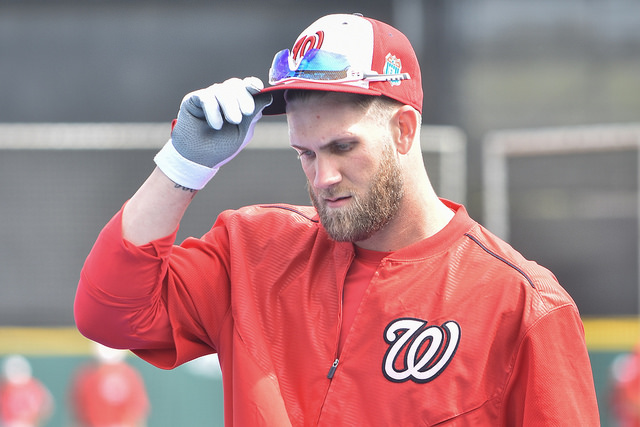When Run Differential Doesn’t Say All: Washington Nationals

This post is one in a series on team’s who’s run differential has proved a poor indicator of actual results. Read our posts examining the run differential of the Colorado Rockies, Seattle Mariners, and Los Angeles Dodgers, here.
Generally, a team’s win-loss record and its run differential correlate positively.
As of August 31, the league leaders in run differential were Boston and Houston, at an astounding +215. As we might expect, their record reflects this. The Red Sox were 50 games above .500 as of this date, best in Major League Baseball. Not to be outdone, the Astros were 29 wins above .500.
Other contenders in the MLB have differentials to match their records, or vice-versa. The New York Yankees (+153), Cleveland Indians (+140), Chicago Cubs (+111), Atlanta Braves (+97), Arizona Diamondbacks (+85), and Oakland A’s (+81) are all leading their respective divisions or are otherwise currently Wild Card qualifiers.
Of course, there are always outliers. Just look at the 2007 Arizona Diamondbacks, who managed a 90 – 72 record and an NL West crown despite a -22 run differential. In 2018, other teams possess records which seem to defy what we’d anticipate given their run differentials. Let’s look at some squads which have either exceeded or fallen short of expectations:
Washington Nationals
Win-loss record as of (8/31): 67 – 68
Expected win loss-record: 76 – 59
No National League team is a bigger disappointment than the Washington Nationals. After all, the LA Dodgers have underachieved but still can play their way into the postseason. The Nats, at a +71 run differential, are 7.5 games back in the NL East and 8.5 games back in the NL Wild Card race. A top-five-payroll team like the Dodgers, it’s been nothing short of a lost season for Washington.
How did they get here?
The Nationals rival the Dodgers in having the worst “luck” statistically in the National League. Washington is 14-21 in one-run games, and a piteous 2-7 in extra-inning games. The extra-inning record is particularly bad, worst of any major-league team.
It likely doesn’t help that only three members of the team qualify for the batting title: Trea Turner, Bryce Harper, and Anthony Rendon. Otherwise, injuries and poor performance abound. The next highest number of at-bats belong to Michael Taylor and Wilmer Difo, who have been no better than replacement value offensively. Adam Eaton, Ryan Zimmerman, and Matt Wieters all missed significant time due to injury. Howie Kendrick last played on May 19, suffering a season-ending Achilles injury. Daniel Murphy started the season on the disabled list, and he and Matt Adams aren’t even Nationals anymore after getting traded.
On top of this, Juan Soto, who has been producing since he set foot “in the bigs,” wasn’t called up until mid-to-late May. In all, the Washington Nationals have lacked consistency. In most major statistical categories, the team has been middle-of-the-road.
Where do they go from here?
As the trades of Murphy and Adams and now Ryan Madson and Gio Gonzalez would suggest, Washington’s leadership has essentially thrown in the towel on 2018. Accordingly, ESPN gives them less than a 5% chance of making the playoffs.
The Nationals were already facing a schedule in September that features St. Louis, the Chicago Cubs, Philadelphia, Atlanta, and Colorado. Plus, they still have a series against the Mets, who have basically played the Nats to a draw. Washington is now down to Max Scherzer, Stephen Strasburg, and Tanner Roark in the starting rotation, alongside Jefry Rodriguez and whomever gets the call to replace Gonzalez. As such, it doesn’t appear as if Washington’s luck is about to improve down the stretch.
Also read our posts examining the run differential of the Colorado Rockies, Seattle Mariners, and Los Angeles Dodgers, linked to here.
















